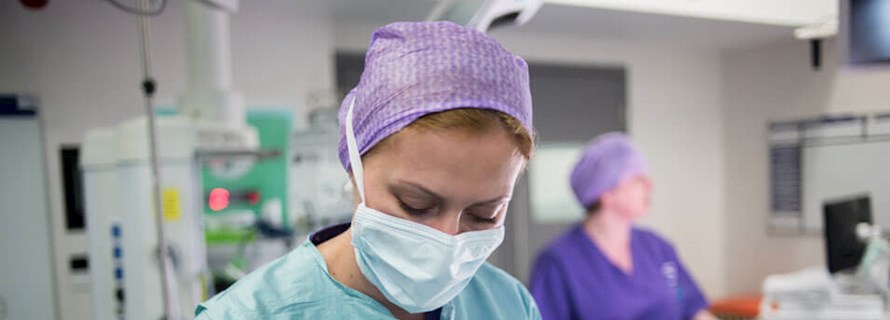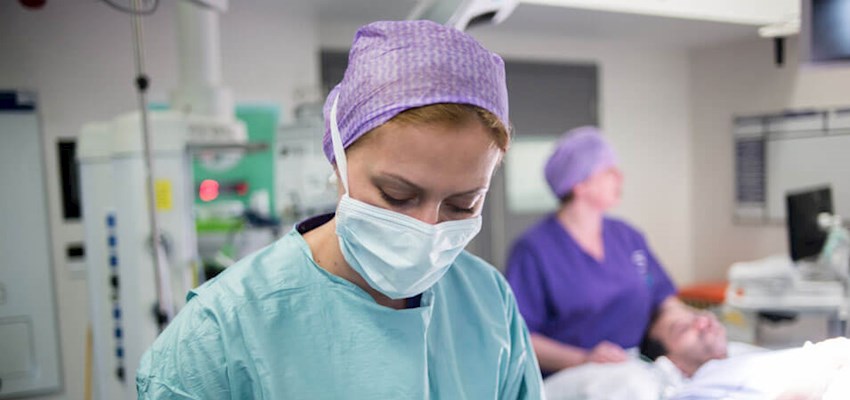Open Reduction Internal Fixation (ORIF)
A PROCEDURE TO RECONNECT FRACTURED AND BROKEN BONES
What is open reduction internal fixation surgery?
Open reduction internal fixation (ORIF) is a surgery to treat bone fractures using support from surgically placed rods and frames.
Sometimes a broken bone requires more than a cast or splint. In these cases, sterile metal components are inserted to keep fractured bones in place and help them set. This helps to ensure that the fractured bone heals in the correct alignment. Some of these may be removed after the fracture has healed, while others will remain in place. These components include:
- Plates: these hold pieces of broken bone together and are attached with screws
- Screws: these can hold bones together themselves, or attach to plates and rods
- Rods: these support fractures in longer bones and are inserted through the hollow centre of the bone to stop it rotating or shortening
- Wires and pins: these are used to hold pieces of smaller bone together
- Frames: fitted to the outside of your body, these keep your bone in the correct position
Why do I need ORIF surgery?
ORIF surgery is usually required as an urgent procedure to deal with serious injuries that have resulted in:
- Multiple breaks across the same bone
- Bones that have moved out of position
- Breaks where the bone has gone through the skin.
- Fractures of the arm, leg, wrist, hips, knee, ankle, and shoulder
Benefits of ORIF surgery
Helping your bones heal in good alignment leads to a more straightforward long-term recovery and is the main benefit of ORIF surgery. Other benefits include:
- The best chance of complicated breaks and fractures healing well
- The best chance of bones regrowing back to pre-injury strength
- Reduce pain
- Restore mobility
Need to know
-
What happens during open reduction surgery? icon plus
ORIF surgery typically takes place under general anesthetic (as advised by your consultant), so you'll be asleep throughout.
The procedure is split into two halves. The first is the open reduction. Your surgeon will realign the bone fragments, before confirming that they are in the correct position with an X-ray.
Next is the internal fixation. Your surgeon will use the metal hardware (screws, plates, cages, rods, frames etc.) to keep the fractured bone fragments in place. The exact type of hardware will depend on the location and nature of the injury.
-
How long does the pain last after ORIF surgery? icon plus
Patients of ORIF surgery should expect pain and swelling around the operated area for a few days after the operation.
Your consultant will work closely with you to prescribe medication to help with pain management, but you should expect to feel some mild pain for up to six weeks after surgery.
Throughout your recovery, our team will work to ensure you are as comfortable as possible.
-
Is internal fixation permanent? icon plus
In most cases the hardware used to correct and repair broken bones in an ORIF procedure are removed once your consultant is confident that the bone has healed well enough.
There are some instances where wires or plates might have to be left in permanently. This depends on what type of fracture or break you have.
-
How long after ORIF can I walk? icon plus
If your ORIF surgery is for a fracture or break to your leg or foot, there will typically be a six to eight-week period following surgery where you’ll be advised not to walk. This is to prevent the healing bones from having to bear weight and avoid further injury.
After this time, you’ll be able to start limited walking with a special boot. This will coincide with a physical therapy programme to help your recovery.
-
How to prepare for ORIF treatment icon plus
Often, this procedure is carried out as an emergency, so preparation is difficult. However, your consultant will take time to explain the procedure to you and answer any questions you may have.
Because you'll be under general anesthetic during the operation, they'll let you know how long you should avoid eating and drinking before surgery.
As with all procedures, there may be some risks and side effects involved. Your consultant will explain these to you.
-
ORIF surgery recovery icon plus
After your surgery, your consultant will take an X-ray of your joints to make sure they are correctly aligned and the procedure was a success. Once you have recovered from surgery, a member of the physiotherapy team will work with you to help restore strength and range of motion in the affected area. The full recovery time can vary and is difficult to determine, but can be anywhere between three months to a year.
You may need further physiotherapy as an outpatient, along with pain medication and rest. Any return to work is decided on a case-by-case basis and will depend on the nature of your job and the nature of your injury.
Our orthopaedic consultants
We're proud to work with leading experts across a range of medical fields, whose skills are matched by their integrity and compassion.




Our locations
From complex surgery to diagnostic tests and procedures, we provide exceptional orthopedic care across our network of hospitals, outpatient centers and specialist clinics.
Request an orthopaedic appointment
We're happy to help you make an appointment with an experienced orthopaedic or sports medicine consultant. We can also arrange imaging and outpatient physiotherapy appointments.
Call us today
020 7079 4344